Animal Cell Organelles: Function, Structure, Picture (Complete)
Animal Cell Organelles – Still discussing cell organelles where this discussion is more specific and detailed about animal cell organelles.
To help understanding, we don't forget to add pictures so you don't get bored easily and enjoy the learning process.
Animal cells are a form of eukaryotic cells that make up body tissues and then form organs. Animal cells are quite different when compared to plant cell.
Plant cells have a cell wall and chloroplasts, while animal cells do not have a cell wall. This quite clearly illustrates the difference between animal and plant cells.
Table of contents
Animal Cell Organelles
All animal cells do not have the same shape, size, and function. Cells come in a variety of shapes and sizes. Some cells are covered by walls, some are not.
Some have slimy coats. However, the main cellular mechanisms are the same: helps body function.
Some animal cells have a thick layer around the cell, this thick layer is called a capsule and can be found inside bacterial cells.
In the human body itself is actually many different types of cells. Consists of 200 types of cells, besides that this body also has non-living materials such as fingernails, hair, teeth and bones. All of this material is made up of dead cells.
The following is a picture of the structure of an animal cell and its parts:

Information:
- Nucleolus
- cell nucleus
- Ribosomes
- Vesicle
- Rough Endoplasmic Reticulum
- Golgi
- Cytocleton
- Smooth Endoplasmic Reticulum
- Mitochondria
- Vacuole
- Cytoplasm
- Lysosomes
- centrosome
- Plasma Membrane
Function, Structure, Picture of Animal Cell Organelles
1. Animal Cell Organelles #Cell Membrane
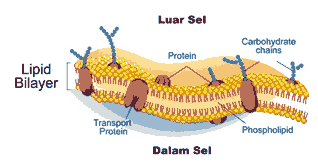
The cell membrane is the outermost part of the cell that surrounds the cell composed of proteins (lipoproteins) and fats (lipids). The cell membrane regulates the entry of minerals and nutrients into and out of the cell. Cell Membrane Functions:
- As a cell protector
- Regulates the entry and exit of nutrients and minerals
- Receiving stimuli from outside
- Where chemical reactions take place
2. Animal Cell Organelle #Cytoplasm
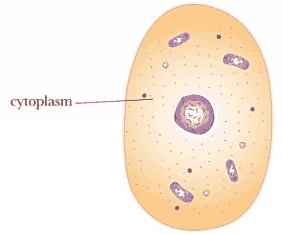
Cytoplasm is a cell fluid or gel-like substance. The liquid part in this cell has 2 forms, namely the Sol Phase (solid) and Gel Phase (liquid). Especially for the fluid located in the nucleus called nucleoplasm.
Cytoplasm consists of protein and water. If the water concentration is low it will become solid and soft, commonly called a gel.
And when the water concentration is high it will be dilute, commonly called sol. Cytoplasm is composed of 90% water, so it functions as a solvent.
Cytoplasmic Functions:
- Site of cellular metabolism
- Source of cell chemicals
3. Animal Cell Organelles #Endoplasmic Reticulum
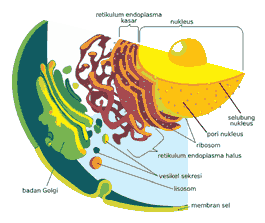
Endoplasmic reticulum or commonly abbreviated as ER is the largest cell organelle after mitochondria. Where the RE forms a series of flat tunnel interconnections, having a shape like mesh threads.
There are 2 types of RE, namely: Rough ER and Smooth ER. The rough endoplasmic reticulum has the responsibility of holding the proteins formed in the ribosomes.
The rough endoplasmic reticulum is studded with ribosomes while the smooth endoplasmic reticulum is not studded with ribosomes.
Endoplasmic Reticulum Functions:
- As a transporter for the synthesis of steroids and fats
- A place to store phospholipids, steroids, and glycolipids.
- Helps detoxify harmful cells in the cells (REh)
- Protein synthesis (REk)
4. Animal Cell Organelles #Mitochondria

Mitochondria are cell organelles the largest which is cell machine. Has a shape similar to a cigar in that it has two layers of curved membrane called critas.
Oxygen and glucose work together in the formation of energy (ATP) needed for metabolism and cellular activity in organelles so that mitochondria have the nickname The Power House because it can produce energy.
Mitochondria in the form of a stump are called mitochondriaMitochondria are organelles that convert chemical energy into other forms of energy.
Mitochondria Function:
- Produces energy in the form of ATP
- Cellular respiration
5. Animal Cell Organelles #Microfilaments
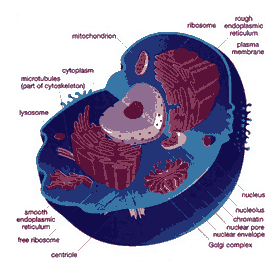
Microfilaments are cells made up of the proteins actin and myosin. Microfilaments have a shape similar to microtubules but microfilaments have a smaller diameter and are softer.
Microfilament works plays a role in cell movement, exocytosis and endocytosis.
6. Animal Cell Organelles #Peroxisomes (Micro Bodies)
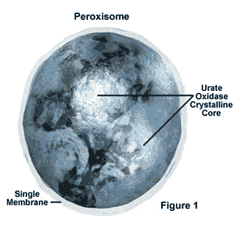
Peroxisomes are small sacs that contain the enzyme catalase which functions to break down peroxide (H2O2) which is a toxic waste of metabolism into water and oxygen which are harmful to cells. Peroxisomes are found in abundance in kidney and liver cells.
Peroxisome Functions:
- Decompose peroxide (H2O2) from toxic metabolic waste
- Convert fat to carbohydrates
7. Animal Cell Organelles #Ribosomes
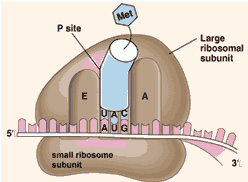
Ribosomes are compact and small organelles with a diameter of 20 nm consisting of 65% ribosomal RNA (rNA) and 35% ribosomal protein (RNP). It consists of two sub-units, namely a large sub-unit and a small sub-unit. For a complete discussion, please read Structure and Function of Ribosomes (Cell Organelles).
Function of the ribosome: The place where photosynthesis takes place.
8. Animal Cell Organelles #Microtubules
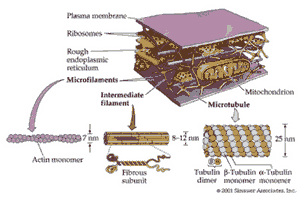
Microtubules are cell organelles located in the cytoplasm found in eukaryotic cells and have a long hollow cylindrical shape with a diameter of 12 nm and an outer diameter of 25 nm. Consists of globular protein molecules called tubulin.
Under certain conditions, tubulin will spontaneously form a long hollow cylinder. Microtubules are rigid.
Microtubule Function:
- Protect cells
- Gives cell shape
- Plays a role in the formation of flagella, cilia and centrioles
9. Animal Cell Organelles #Golgi Body
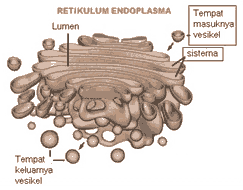
Golgi body or golgi complex or golgi apparatus is an organelle that can be found in all eukaryotic cells and is present in excretory functions such as the kidneys.
Has a shape like a flattened sac that is small to large and is bound by a membrane.
Each animal cell generally has 10-20 Golgi apparatus. And if you want to know, the name of this cell organelle is taken from the first person to describe this organelle in the cell which is Camillo Golgi Italian origin.
Golgi Body Functions:
- Forms vesicles (sacs) for excretion
- Forming lysosomes
- Processing protein
- Forms the plasma membrane
10. Animal Cell Organelle #Nucle
The nucleus is the nucleus of the cell that controls and regulates cell activities both from metabolism to cell division.
The nucleus is found in eukaryotic cells and contains the genetic material, namely: DNA (Deoxyribonucleic Acid) and chromosomes. DNA consists of nucleotides which help in the formation of proteins in the process of translation and transcription. The nucleus consists of parts such as
- nuclear membrane (karyoteca)
- Nucleoplasm (Kariolymph)
- Chromosomes/Chromatin
- Nucleolus

Nucleolus is an area located in the cell nucleus (nucleus) that plays a role in the formation of proteins using ribonucleic acid (RNA).
Nuclear membrane is a porous protective sheath that covers the nucleus, allowing the entry of substances and it is one of the characteristic features of animal cell organelles.
nuclear membrane is the main structure of the nucleus that encloses the entire organelle and separates the cytoplasm from the nuclear region.
Being impermeable to most molecules, the nucleus requires nuclear pores, allowing the nucleus to pass through the membrane.
Nuclear Membrane Function
- Protecting the cell nucleus (Nucleus)
- Site of exchange of substances between nuclear material and cytoplasm
Nucleoplasm is a solid liquid located in the cell nucleus (nucleus) which contains chromatin fibers, which solid and function to form chromosomes and genes that carry genetic information or hereditary aliases.
Nucleus Function
- To maintain the integrity of the genes
- Controls cell activity by managing gene expression
- Storing genetic information
- Where replication occurs
- Controlling metabolic processes in cells
Parts of Animal Cells That Are Not Found in Plant Cells
1. Animal Cell Organelles #Centrioles
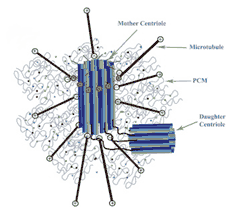
Centrioles are tubular cells consisting of semirigid microtubules and is found in eukaryotic cells.
Centrioles also play a role in cell division and the formation of cilia and glagela. A pair of centrioles that form a combined structure is called a centrosome.
Plant cells do not have centrioles although animal cells divide without centrioles. Centriole organelles will appear to help during the process.
In addition, centrioles play a role in regulating cell geometry and orientation.
It is very important in the embryonic development of organisms. Animal cells without centrioles then cilia or flagella do not develop functionally.
Centriole Function:
- The process of cell division in forming spindle threads
- Plays a role in forming cilia and flagella
2. Animal Cell Organelles #Lysosomes
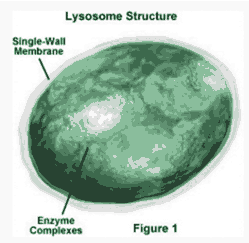
Lysosomes are membrane-bound sac-like organelles that contain hydrolytic enzymes needed to break down unnecessary parts of the cell for reuse (controls intracellular digestion) under any circumstances. Lysosomes are located in eukaryotic cells.
Lysosomes Function:
- Digest material using phagocytosis
- Controls intracellular digestion
- Destruction of unnecessary/damaged cell organelles (autophagy)
- Entering macromolecules from the outside into the cell using the mechanism of endocytosis end
3. Animal Cell Organelles #Cytoskeleton
The cytoskeleton or cell skeleton is a cell organelle in the form of a network of protein filaments and fine hairs located between the nucleus and the membrane.
Serves to give and maintain cell shape, also functions in the movement of cells and cell organelles.
Plant cells have internal protein structures that make up the cytoskeleton, relying more on a rigid cell wall.
Animal cells have a flexible cytoskeleton consisting of actin filaments, between hollow microtubules and thick filaments.
The cytoskeleton consists of:
- actin filament,
- middle filament.
- Microtubules.
Actin filaments (microfilaments) is a filament formed by fine fibers having a diameter of 7 nm. Contains 2 strands of globular (spherical) actin chains twisted around each other.
middle filament is a filament that has a shape like a rope with a diameter of 8-11 nm. Some of the middle filament serves to strengthen the nuclear layer, while others to support the plasma membrane and connect microtubules and actin filaments.
Microtubules is part of the cytoskeleton in the form of fine hairs with a diameter of 25 nm, length 0.2-25 nm, and is made up of a globular protein called tubulin. Has the function of maintaining cell shape and movement of cell organelles.
Microtubules can elongate and shorten, during the process of cell division they will form spindle threads that allow chromosomes to move. The mechanism of action of microtubules is regulated by centrosome.
That's a brief review YukSinau.id but it is quite complete because it is taken from several sources regarding the understanding of animal cell organelles, animal cell functions along with the structure and pictures of each animal cell organelle. Hopefully you at least know the difference between animal and plant cells.
